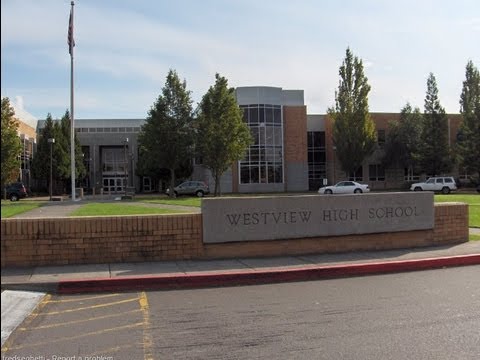Westview High School: Building a Bridge for Students Between High School and Postsecondary Education Using a Senior Inquiry

With the goals of college readiness and student engagement in mind, WHS built a Senior Inquiry course that mirrored an approach to instruction often seen in postsecondary institutions—one that is cross-curricular and student-driven.
Over two decades ago, Westview High School (WHS) began an initiative to build a bridge for students between their high school and postsecondary education experiences through a Senior Inquiry course. Westview educator Barbara Traver studied at Portland State University (PSU), where she was exposed to PSU’s acclaimed interdisciplinary Freshman Inquiry course. This year-long course for college freshman is interactive and explores various topics and issues using an interdisciplinary approach to show how they can be understood from different perspectives. The class includes both lecture and group dialogue on course content, student-led discussions based on homework assignments, and creative opportunities to challenge and expand students’ thinking. Knowing that a large portion of the PSU student body comes from Beaverton and Portland-area schools, Barbara wondered what would it look like to create a similar transition class for high school seniors.
With the goals of college readiness and student engagement in mind, WHS built a Senior Inquiry course that mirrored an approach to instruction often seen in postsecondary institutions—one that is cross-curricular and student driven. The course was taught collaboratively by three WHS teachers from different content areas (English/language arts, science, and social studies) in an effort to break students out of traditional content-specific learning so they could hone their critical thinking skills, learn to work collaboratively, and ultimately take ownership of their learning. Instead of more typical instruction where students are given an assignment and a concrete timeline for completing each step, the Senior Inquiry class used a model students are more likely to experience in college with longer deadlines, mapping out their own calendar for completing the projects. Through the process of creating and refining the Senior Inquiry program, WHS developed a long-standing partnership with PSU, and the course is now taught by two high school teachers in partnership with an instructor from PSU. Not only has WHS expanded their own program, they have also shared their experiences with several other metro-area high schools who have since started their own programs.
As Senior Inquiry teachers team up to build, design, and co-teach the cross-content material, they create a unique sense of community. This strong collaborative environment not only draws students to enroll in Senior Inquiry, but fosters their skills for creating learning communities that will prepare them for life after high school. Students are encouraged to form study groups outside the classroom, engage in dialogue with classmates and instructors, and are given the opportunity to visit PSU’s library, gaining hands-on experience writing a research paper. The school building is structurally set up to support learning opportunities like Senior Inquiry—several classrooms contain movable walls, giving teachers the freedom to create curriculum around both small group work and large group discussion.
Senior Inquiry has grown into a foundational core of WHS, serving over 200 students each year, and has led to increased discussion about what is happening schoolwide around college readiness, and what is being built into the school culture that promotes advanced learning opportunities for all students. Providing advanced learning opportunities and postsecondary options for all students has risen to the top of WHS’s priority list, and they are taking a close look at who is being identified, recruited, and placed into classes such as Senior Inquiry. This approach of building a culture of team-based teaching and learning, combined with a focus on preparing all students for the future, whether that be college or a career, is an admirable example of a holistic approach to student readiness.

About the Author
Dr. Matt Coleman is the CEO of Inflexion, where he leverages his deep-rooted expertise in school systems change to drive impactful educational reform. With a career spanning various roles—from educational assistant to assistant superintendent—Matt’s experience encompasses every level of secondary education.






Responses